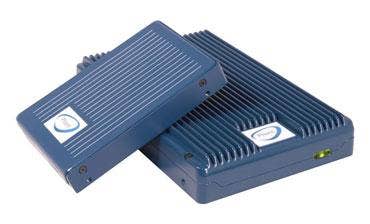SanDisk Plans To Buy SSD Maker Pliant Technology

SanDisk on Monday said it plans to acquire SSD developer Pliant Technology in a deal that would combine SanDisk's Flash memory technology with the standard form factor SSD technology of Pliant.
Under the terms of the deal, which is expected to close by the end of SanDisk's second fiscal quarter, SanDisk plans to pay about $327 million in cash, along with what the company termed certain equity-based incentives.
Pliant's product line includes enterprise SSDs based on MLC NAND memory technology, and the company's roadmap includes PCIe-based SSDs for high performance computing servers.
SSDs can be divided into two primary categories depending on the technology of the Flash memory on which it is built. Some SSDs feature single-level cell (SLC) memory technology, in which one bit of data occupies one cell of the flash memory, making it optimized for performance and data reliability. Other SSDs feature multilevel cell (MLC) technology, in which four bits of data occupy one cell of the Flash memory for greater capacity.
MLC-based NAND costs significantly less than SLC-based NAND, which has caused several SSD manufacturers to use improved controllers to give MLC technology the kind of performance and reliability expected of enterprise-class SSDs.
With the acquisition of Pliant, SanDisk is making its first entry into the enterprise storage market, one marked by an increasingly competitive environment sparked by consolidation on both the hard drive and SSD vendor sides.
Seagate last month unveiled a deal to acquire the hard drive business of Samsung Electronics, a deal which also includes an agreement for Samsung to supply NAND to Seagate's nascent SSD manufacturing business.
The other major hard drive vendor, Western Digital, in March said it plans to acquire another competitor, Hitachi GST, which late last year introduced its own enterprise SSD line.
Meanwhile, several other vendors with no previous experience in the hard drive market have entered the market for SSDs.
Sumit Sadana, senior vice president and chief strategy officer for SanDisk, said his company is entering a very competitive market with the planned acquisition of Pliant. However, he said it is also a fast-growing and very profitable market, one that he expects to reach over $4 billion by 2015, up from about $1 billion in 2010.
It is a market still in its infancy, but one that SanDisk has the technology needed to be a winner because after the acquisition it will control both the SSD and the NAND memory technology, Sadana said.
That is a very important differentiator because of the fact that, with every new generation of NAND Flash memory, the performance, reliability, and endurance of the technology falls, he said.
SanDisk is currently ramping up the technology to build Flash memory at the 24-nm level, which is significantly more advanced than the 32-nm process most commonly found in the industry, Sadana said. The company is also planning to sample Flash memory chips using the 19-nanometer process later this year, he said.
Shrinking cell sizes helps drive down Flash memory prices, and with them the price of SSDs, Sadana said. "But as you shrink the lithography with each new generation, the electrons we have to play with between cells are fewer and fewer," he said. "This is not a SanDisk issue. We are dealing with physics."
To produce SSDs using every smaller Flash memory technology, which increases the possibility of memory error and lower performance, manufacturers need to deploy multiple techniques in their hardware and firm to compensate for the issues in order to make a stable SSD, Sadana said.
NEXT: Pliant Gives SanDisk The Edge
That gives companies such as SanDisk an edge in this market because they control both the SSD and Flash memory technology, he said.
"Hard drive vendors don't have the Flash technology," he said. "They can make deals with Flash manufacturers, but they don't own the technology. Without the roadmap to look at the crosstalk between cells, it's hard for them to keep up with the technology."
SanDisk looked at the different SSD vendors and decided to acquire Pliant because of that company's ability to take MLC-based NAND Flash memory to compete in an industry where SLC NAND, with its higher performance, had been expected to drive the enterprise SSD market, Sadana said.
"SLC is much more expensive than MLC," he said. "But Pliant has been able to get extremely good performance with its enterprise MLC products. In addition, Pliant has an ASIC-based solution for its SSD controller which many of its competitors use FPGA-based controllers which are larger and more power-hungry."